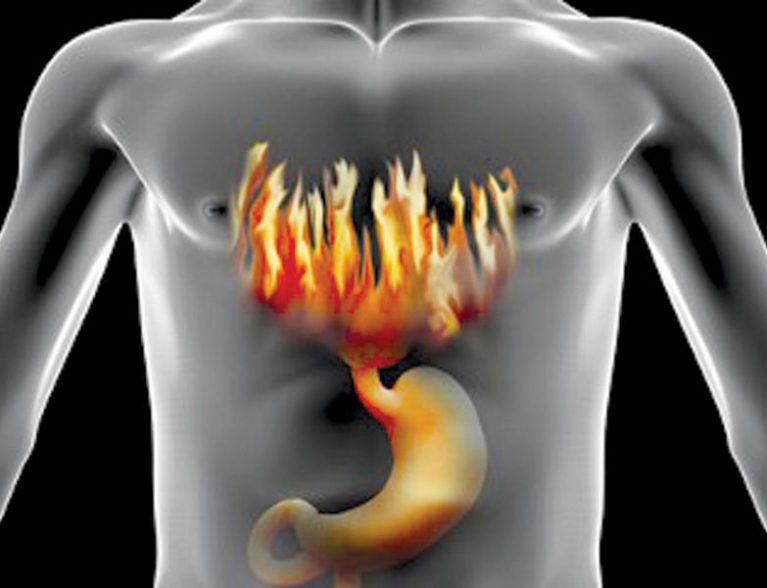
Men over the age of 60 who have had GERD – gastroesophageal reflux disease – for 10 years or more are well advised to be screened for Barrett’s esophagus, a precancerous condition in which the lining of the esophagus changes to resemble the lining of the intestines.
This is the guidance of BOB CAT (Benign Barrett’s and Cancer Taskforce), whose findings were recently published in the American Journal of Gastroenterology. The researchers say that screening is important even if symptoms of GERD are controlled by medication. The taskforce reviewed more than 20,000 papers from more than 100 experts worldwide in order to provide its diagnostic and treatment recommendations.
Dr. Deepti Sadhwani, of Quality Health Care & Wellness in Vero Beach and Sebastian, is board-certified in internal and bariatric medicine. She agrees with those screening guidelines, but says with the rise in the incidence of obesity, it’s not just men and it’s not just people of a certain age who are at risk of developing Barrett’s.
“Visceral fat – belly fat – is associated with an increased release of several pro-inflammatory cytokines, specifically tumor necrosis factor,” Dr. Sadhwani says. Tumor necrosis factor is a protein that sends “inflammatory” signals to cells.
“Women as well as men can carry visceral fat,” Dr. Sadhwani adds. “More visceral fat means more inflammation, which puts the person at higher risk of developing Barrett’s.”
We’ve written before about GERD, a progressive form of acid reflux. Acid reflux occurs when stomach acid flows backward from the stomach into the esophagus. Its symptoms are decidedly uncomfortable and unpleasant – heartburn, the taste of regurgitated food or sour acid in the back of your mouth, difficulty swallowing, and coughing and wheezing. With GERD, these symptoms appear with more frequency and perhaps more severity.
GERD affects an estimated 30 percent of the U.S. population, and about 10 percent of patients with GERD develop Barrett’s. But while the presence of GERD is common in those diagnosed with Barrett’s, approximately 25 percent do not have any sort of reflux disease, or even occasional heartburn. Barrett’s itself does not have specific symptoms; in rare cases, it can lead to cancer of the esophagus, a serious, potentially fatal condition.
People with a high level of belly fat, or those with GERD, should talk to their doctor about getting screened for Barrett’s. The screening consists of a minimally invasive procedure called an upper endoscopy; it allows the physician to view the esophagus for the presence of Barrett’s tissue. At the time of the procedure, a biopsy will be taken to confirm the diagnosis and to look for cancerous or precancerous cells.
It is possible to prevent GERD (or at least alleviate its symptoms), which is a good thing in and of itself, as well as mitigating a major risk factor of developing Barrett’s.
• Lose weight. Extra stomach fat places pressure on the abdomen and pushes gastric juices into the esophagus. Dr. Sadhwani says losing even as little as 10 percent of body weight can make a big difference in reducing the risk of Barrett’s, and in reducing the risk of Barrett’s turning into esophageal cancer.
• Stop smoking. Studies have shown that nicotine can cause the lower esophageal sphincter (LES) to relax, which can lead to GERD.
• Eat smaller meals. Large meals put pressure on the LES, making reflux more likely.
• Wear loose-fitting clothing. Tight clothes can constrict the stomach.
• Cut back on alcohol. As with smoking, alcohol can cause the LES to relax and can also cause the esophageal muscles to spasm.
• Chew gum. It increases saliva and neutralizes acid.
• Elevate the head of your bed 6-8 inches, or use a wedge-shaped support. This helps gravity keep gastric acid down in your stomach. Extra pillows won’t help – they only raise your head and will not help with GERD.
• Don’t lie down after eating. This may be the most important tip of all. Gravity helps keeps acid in your stomach, where it belongs, rather than in the esophagus, where it can do damage.
While conventional internet wisdom advocates avoiding a broad range of foods (fatty, spicy, acidic), along with chocolate, mint, and onions, another school of thought says there is no consensus data on diets; and recommends avoiding foods that make symptoms worse, rather than certain foods in general.
If GERD does develop, there are many mainstay treatments; Dr. Sadhwani spoke of proton pump inhibitors, such as Nexium, Prevacid and Prilosec; H2 blockers such as ranitidine; and antacids, such as Tums. Tums and other antacids (for example Zantac and Pepcid AC) are available over the counter.
“Promotility medications may also be helpful,” Dr. Sadhwani says. “They stimulate the muscles of the gastrointestinal tract, which can help prevent acid from sitting in the stomach too long and consequently pushing up into the esophagus.”
Periodic endoscopies are recommended for those with Barrett’s even if no cancer or precancerous cells are found in the initial endoscopy. If abnormal tissue is found, there are surgical options patients should discuss with their physicians.
Dr. Sadhwani was recently named Woman of the Year in the Business Professional category by the Junior League of Indian River County. Quality Health Care & Wellness is located at 12920 U.S. Highway 1 in Sebastian (772-581-2373) and at 8701 U.S. Highway 1 in Vero Beach (772-228-8480.



